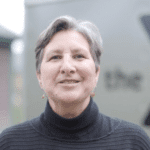STEM jobs are growing faster than other US jobs, but how are we ensuring all youth have equal opportunity to fill those high-paying roles?
Currently, only 12% of scientists and engineers are African American, Hispanic, or Native American. Also, many children from low-income communities do not pursue STEM careers because of lack of exposure due to poorly equipped schools and lack of role models with STEM backgrounds. Without having adequate skills and knowledge, youth stop short on their journey to reach their fullest potential.
Katherine Boo in Behind the Beautiful Forevers raises some significant questions about haves and have-nots, poverty and wealth, equity and inequity and the opportunity that all young people should have to survive and thrive in this world. She notes:
- What is the infrastructure of opportunity in a society?
- Whose capabilities are given wing by the market and a government’s economic and social policy? Whose capabilities are squandered?
- By what means might a child grow up to be less poor?
The YMCA, as a cause-driven organization, has intentionally worked throughout history to address inequities in our society. This work has been realized through homeless shelters, feeding millions of youth who would otherwise go hungry and delivering high-quality programs to close the achievement gap. Y’s are intentionally including engaging learning experiences that encourage STEM activities and skills, including problem solving skills and a stronger STEM identity and awareness of STEM careers. For example:
- A’STEAM — a collaborative project of the YMCA of Greater Houston and the Children’s Museum of Houston — provides hands-on experience to improve children’s knowledge and skills. The majority low-income youth participants have posted gains in math (33%), vocabulary (25%) and science (15%). Next year the YMCA of Greater Houston will expand to 108 afterschool sites serving more than 2,500 youth and 100 middle school sites implementing
- In a collective effort called, Imagine Science, Ys in Dallas, Omaha and Anaheim, have come together with the Boys and Girls Club, Girls Incorporated and 4-H to reach youth that do not have STEM opportunities and are currently unserved by any of these four large organizations. Once again, the focus is on low-income, underrepresented populations of middle school youth to get them and keep them interested in STEM.
There is still so much more to do. As youth developers, we must keep educating youth with STEM, keep analyzing which zip codes we are not reaching and become innovative in how we provide critical STEM experiences to youth who currently do not have access. Investing in each child as if they were your own will give them both the skills and aspirations for success in this world.
Guest blogger
Pam Garza
STEM Project Director
YMCA OF THE USA
Follow Pam on Twitter @STEM4youth


